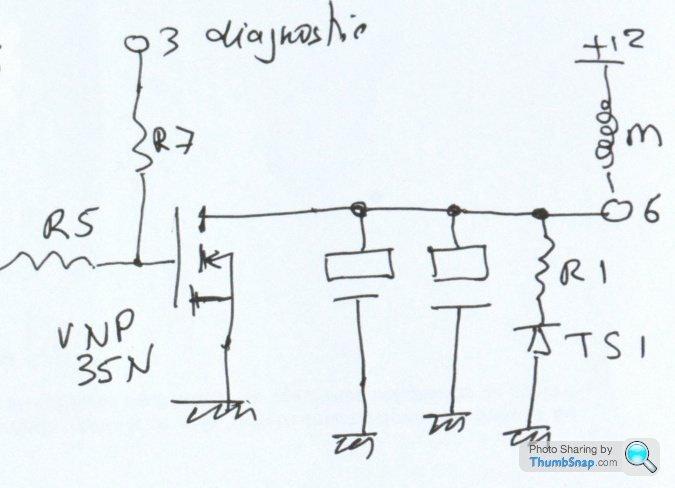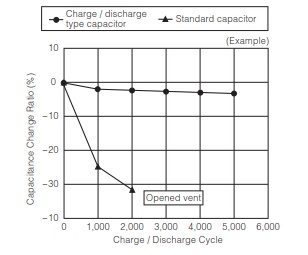fan controller capacitors
Discussion
I've recently traced out the circuit of the fan speed "amplifier" board and came to a surprise conclusion as to how it works, and the type of capacitor required to replace the originals
.
This is the relevant part of the circuit:

It is basically a PWM controller running at around 30Hz. The width of the pulse determines the fan speed. The VNP35N switching device is shorting out the capacitors 30 times a second. The only thing limiting the current is circuitry built into the VNP35, which limits it to 35A. Standard electrolytics are not designed to be used like this. The high pulse currents will generate much more heat than usual, and shorten the life of the component. Nichicon, a top tier capacitor manufacturer did a comparison of the life of standard caps vs caps designed for pulse applications.

I don't know the spec of the original components apart from their voltage and capacitance, but in my opinion they should be replaced with electrolytics specially designed for pulse discharge applications. I used EPCOS B41505, 1000uF, 100V. Other capacitors are available.
https://www.tdk-electronics.tdk.com/inf/20/30/db/a...
As an aside, the loading on the capacitors is very dependant on speed. At high fan speed the capacitors are shorted out for most of the time, and get very little heating. At low fan speed they take quite a hammering.
.
This is the relevant part of the circuit:

It is basically a PWM controller running at around 30Hz. The width of the pulse determines the fan speed. The VNP35N switching device is shorting out the capacitors 30 times a second. The only thing limiting the current is circuitry built into the VNP35, which limits it to 35A. Standard electrolytics are not designed to be used like this. The high pulse currents will generate much more heat than usual, and shorten the life of the component. Nichicon, a top tier capacitor manufacturer did a comparison of the life of standard caps vs caps designed for pulse applications.

I don't know the spec of the original components apart from their voltage and capacitance, but in my opinion they should be replaced with electrolytics specially designed for pulse discharge applications. I used EPCOS B41505, 1000uF, 100V. Other capacitors are available.
https://www.tdk-electronics.tdk.com/inf/20/30/db/a...
As an aside, the loading on the capacitors is very dependant on speed. At high fan speed the capacitors are shorted out for most of the time, and get very little heating. At low fan speed they take quite a hammering.
non_linear said:
This is the relevant part of the circuit:
Any chance you have the full circuit? Just wondering if there would be a chance to re-build this since the boards are not available any longer. Sending it to Paul Smith from Germany isn't the most practical of things...Cheers
Konrad.
EPCOS B41505, 1000uF, 100V... I am seeing these as 'snap in' (I have moved my controller into the air-conditioning box in air flow, as my car does not have air conditioning, so I cannot get at it as I would of previously). Is this the case, or have they been soldered to the board.
Is there link to the item that you have purchased. A@
Is there link to the item that you have purchased. A@
Adrian@ said:
EPCOS B41505, 1000uF, 100V... I am seeing these as 'snap in' (I have moved my controller into the air-conditioning box in air flow, as my car does not have air conditioning, so I cannot get at it as I would of previously). Is this the case, or have they been soldered to the board.
Is there link to the item that you have purchased. A@
"Snap in" just means they hold themselves onto a PCB, which makes soldering them easier. They most definitely need soldering.Is there link to the item that you have purchased. A@
I got mine from Farnell:
https://uk.farnell.com/epcos/b41505a9108m000/cap-1...
Gassing Station | Tamora, T350 & Sagaris | Top of Page | What's New | My Stuff



